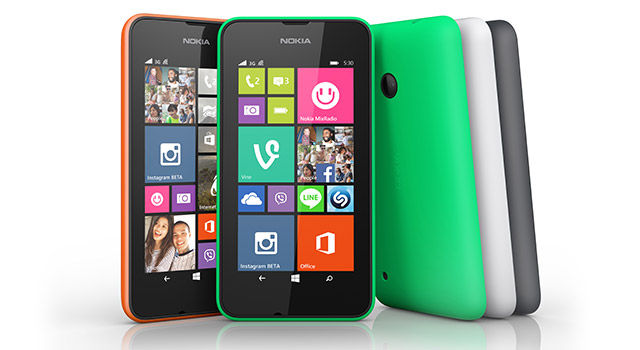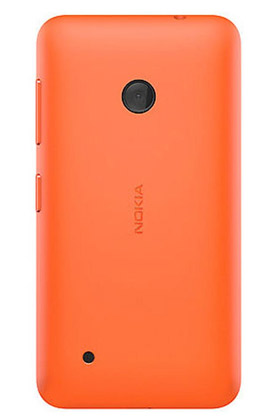
Here at TechCentral, we have long been fans of Windows Phone. We think it’s the perfect platform for new smartphone users or those people that want a no-fuss operating system. And Microsoft’s newest, the Nokia Lumia 530, is a great entry-level Windows Phone device for budget-conscious consumers.
The 530 has much to live up to. Its predecessor, the Lumia 520, was the best-selling Windows Phone device in its category in South Africa and worldwide.
The Lumia 530 resembles the 520, but it’s edges are more rounded. The phone still has a 4-inch liquid crystal display, but the screen quality has been upped ever so slightly — 480×854 pixels for a pixel density of 246ppi, up from the 520’s 480×800 pixels and 233ppi. It is also a little heavier and slightly thicker than its predecessor, but weighing in at 129g, with a girth of 11,7mm, this phone isn’t going to weigh heavily in your pocket.
The capacitive buttons on the Lumia 520, just below the screen, have been made part of the display, providing a much cleaner look to the phone’s front panel. The buttons and 3,5mm audio jack remain untouched, but Nokia removed the dedicated camera button on the side of the phone, which is a pity in our view.
The phone has a 1 430mAh battery (same as before) that will deliver talk time of about 13 hours. Battery life under normal usage conditions should last just more than a day. There’s a 1,2GHz Qualcomm Snapdragon 200 processor powering the device. It’s enough grunt to ensure Windows Phone runs reasonably smoothly.
 Compared to last year’s model, the Lumia 530 has been trimmed in two important areas. Firstly, the internal flash storage has been cut from 8GB to just 4GB, though this can be expanded by way of a microSD memory card up to 128GB. Secondly, the 530’s video recording capabilities are not as good — the 520 was able to shoot video at a respectable 720p at 30fps, but it’s only 480p, also at 30fps, on the new phone. The camera keeps a 5-megapixel sensor, although its now a fixed-focus shooter — the Lumia 520 had auto focus. There is no rear flash or front-facing camera either, but this is not unique to entry-level smartphones.
Compared to last year’s model, the Lumia 530 has been trimmed in two important areas. Firstly, the internal flash storage has been cut from 8GB to just 4GB, though this can be expanded by way of a microSD memory card up to 128GB. Secondly, the 530’s video recording capabilities are not as good — the 520 was able to shoot video at a respectable 720p at 30fps, but it’s only 480p, also at 30fps, on the new phone. The camera keeps a 5-megapixel sensor, although its now a fixed-focus shooter — the Lumia 520 had auto focus. There is no rear flash or front-facing camera either, but this is not unique to entry-level smartphones.
We can only imagine that Nokia has pared these features in an effort to bring down the 530’s price. The 520 was introduced last year at R1 899; the 530 costs R550 less, even though the rand has weakened substantially against both the dollar and the euro in the same period.
As with other Lumia phones, this one features an array of brightly coloured and replaceable back covers, available in bright green, bright orange, white and dark grey.
Basic connectivity options are supported, including 3G cellular and 802.11 b/g/n Wi-Fi. The phone can be used as a hotspot. It also has full GPS support.
The Lumia 530 comes with a number of applications, including Facebook, Skype, MixRadio, Office and OneDrive. Users get 15GB of free OneDrive storage when they sign up.
Considering its price, it’s hard not to love what the entry-level Lumia 530 has to offer. If you have a Lumia 520, though, the upgrade might not seem as appealing as it would have been with an improved camera and video recording capabilities.
The Lumia 530 has a recommended retail price of R1 349. There’s also a dual-Sim version for sale online. The Orange store has it for R1 435. — © NewsCentral Media




